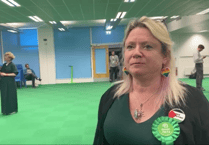The north river bank between Churchill Bridge and Green Park is undergoing works to create a new riverside park and reconnect the city centre to the riverside, as part of the Bath and North East Somerset Council and Environment Agency project, which will also reduce flood risk for more than one hundred existing properties and allow Bath Quays to develop as a new home for businesses.
The Council’s contractor has been working from east to west to excavate the north river bank, along with a team of archaeologists who mapped and recorded the remains of the 18th century industrial buildings which were below the surface. With re-profiling of the river bank complete, the focus this year turns to hard and soft landscaping work, to create a new natural landscape, with native trees and new and enhanced pedestrian and cycle routes.
In order to create the lower promenade, and widen the existing towpath between Green Park and Churchill Bridge, the towpath will need to be closed from Monday, 9th January for the remainder of the north bank works. Boat moorings will still be accessible, with pedestrians and cyclists signposted to divert via Ambury, Corn Street, Green Park Road and Green Park cycle path.
The widened river bank is designed to accommodate the flow of flood waters, and so once open to the public, access to the bank will be restricted during flood events.
Councillor Patrick Anketell-Jones (Conservative, Lansdown), Cabinet Member for Economic Development at Bath and North East Somerset Council, said: “It’s good to see that the work on the Bath Quays Waterside Park is progressing well and over halfway towards completion. These works will ultimately lead to new spaces for innovative and creative businesses and will secure good jobs and homes in the city for future generations.”
As well as the new park, the project opens up the opportunity to build the new Bath Quays business district with the two sites, on either side of the river, to be connected by a brand new pedestrian and cycling bridge. A planning application has been recently submitted for the Bath Quays South mixed use development scheme. Subject to approval, it is expected that work could start on site this spring, and once completed, the sites have the potential to create more than 2,000 new jobs in the city.
Ed Lockington, from the Environment Agency, said: “We are pleased to work with Bath and North East Somerset Council on this project, which will reduce existing flood risk in Bath and help provide exciting redevelopment opportunities.”
Ongoing and remaining phases of the project include:
· Installing flood defences in existing buildings fronting onto the river along the Lower Bristol Road.
· Installing new flood walls and raising existing river walls on the south side of the river between Churchill Bridge and Midland Bridge.
As a result of the extensive archaeology work, it is now expected that the majority of the riverside park will be completed in mid-2017. A section of the landscaping on the north bank, in the area of the proposed Bath Quays Bridge landing, (opposite the Riverside Coach Park) will not be completed until 2018, after the bridge is installed (subject to planning consent). The Council anticipates that flood defence works along the south edge of the river will be completed in 2017/18.
To learn more about the archaeological discoveries on the north side of the river, there will be a fascinating talk at the Bath Royal Literary and Scientific Institution (BRLSI) on Wednesday, 25th January at 7.30pm. For more information, visit: www.brlsi.org.uk




Comments
This article has no comments yet. Be the first to leave a comment.